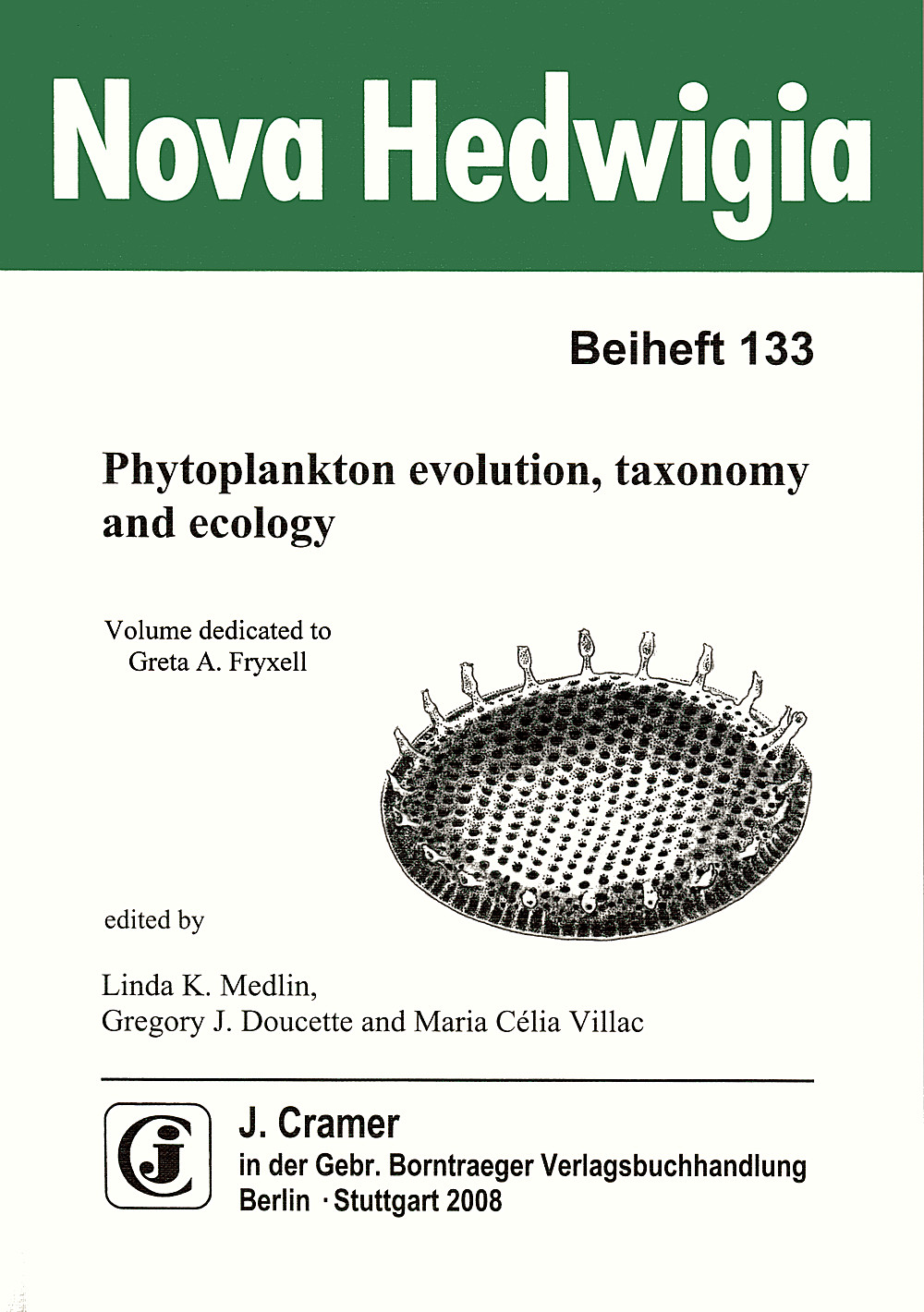This special issue of Nova Hedwigia Beihefte is dedicated to the well
known diatomist and marine plankton biologist Greta A.Fryxell. A first
section of the book (pp. ixxviii) is devoted to Greta Fryxell’s long
and distinguished career, including some biographical elements
together with a list of her publications (from 1970 to 2003) and some
tributes by former students and colleagues, among which a note by
Eugene Stoermer on «Greta A.Fryxell’s contributions to diatom
taxonomy». This section ends in a short «picture gallery» and,
somewhat curiously, with some colour plates illustrating papers
following later in the volume.
The second part of the book (pp. 1-329) includes twenty-one scientific
papers ordered in three groups according to their authors: ten
articles contributed by her former students, eight articles by her
colleagues and three articles by her children. From this latter group
we can see the variety of scientific interests shown by her children,
including evolution of cyanobacteria, geological research or water
purification by means of nanomaterials.
More than half of the phycological papers deal with taxonomy,
morphology and evolution of diatoms, especially of the following taxa:
Minidiscus trioculatus, Odontella aurita and O. longicruris,
Thalassiosira lacustris, some species of Coscinodiscus, Fragilariopsis
cylindrus and F. nana, Pseudauliscus radiatus and Fryxelliella
floridana and a number of araphid genera. Two new genera are
described: (1) Poloniasira fryxelliana Kaczmarska & Ehrman, n. gen.,
n. sp., a new fossil thalassiroid diatom from Poland and (2)
Mastodiscus Bail. ex Prasad & Nienow, a new genus of recent marine
diatoms, based on a forgotten «nomen nudum» of Bailey to accommodate
Pseudauliscus radiatus (Bail.) Schmidt which appeared to be different
enough from P. peruvianus to be considered a genus of its own.
Other papers on diatoms include morphological observations and
phylogenetic studies on psychrophilic polar diatoms, observations on
chain formation as evidenced by the early diatom fossil record and an
assessment of recent genera in the araphids using molecular data. In
the latter article, molecular analyses seem to demonstrate that the
group of species around Synedra ulna (Fragilaria subgen. Ulnaria)
would be generically different from Fragilaria. If this is
established, the correct name of this genus under the current code of
nomenclature would be Ulnaria and not Synedra as proposed by the
authors since the type of the genus name Synedra is S. balthica (=
S. gaillonii) which implies that only the genus including S. gaillonii
could be called Synedra (and not Catacombas, as proposed by the
authors).
Physiology and biochemistry of the diatoms include a study on salinity
and domoic acid production in Pseudo-nitzschia multiseries and another
on intracellular ion concentration and cell sap density in buoyant
oceanic phytoplankton.
Studies on marine phytoplankton concern bloom ecology in the Inner Sea
of Chiloé (Chile), the surf-zone of the State of São Paulo, Brazil and
the picoplankton of the Atlantic sector of the Southern Ocean, this
one involving mainly the prokaryotes Synechococcus and Prochlorococcus
and some undetermined picoeukaryotes.
Three further papers deal with Dinophyceae: a short note on a
Protoperidinium grazing on a colony of Phaeocystis, a paper on the
identification of the Kareniaceae in the Gulf of Mexico and another on
a new buoy-based in-situ optical early warning system for harmful
algal blooms, specially designed for detecting blooms of the harmful
dinoflagellate Karenia brevis.
The book will be of interest for all diatomists and for the
phycologists involved in studies on marine phytoplankton but also for
researchers and other people involved in the prevention and struggle
against harmful algal blooms.
P. COMPÈRE, Meise, Belgium
Nova Hedwigia 87/3-4 (November 2008)
